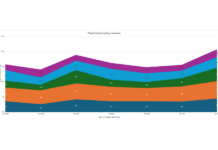NextGenerationEU is the EU’s €800 billion temporary recovery instrument to support the economic recovery from the coronavirus pandemic and build “a greener, more digital and more resilient future.”
The size of NextGenerationEU would translate into borrowing volumes of on average roughly €150 billion per year between mid-2021 and 2026, which will make the EU one of the largest issuers in euro. In a slower and more controlled version of the UK’s mini budget, markets are already repricing European debt ahead of this enormous issuance. With rates rising there will be a considerable directional buy/sell-dynamic which could test liquidity support.
John Edwards, global head of BrokerTec, CME Group, “If the EU wants to increase liquidity in its cash bond markets, there needs to be a robust and liquid repo market to support the borrowing and lending of securities to enable traders to take a position on the outright cash bond markets. The two are intrinsically linked and pretty much need to be developed in tandem throughout 2023 if this project is to succeed.”
To finance NextGenerationEU, the European Commission is borrowing on the capital markets on behalf of the EU. Thanks to the EU’s high credit rating, the Commission is able to borrow on realteively advantageous conditions and the Commission is then passing the benefit on to the EU Member States directly when providing them loans or to the Union budget in the form of low interest rate payments on borrowings to finance recovery spending.
The EU budget – which is financed by own resources and contributions from all EU Member States – backs the borrowing.
“As the EU continues to issue throughout its funding schedule, we anticipate a lot of client engagement with everyone focusing on the same goal of increasing overall liquidity. To date much flow and trading remains more focused between the dealer to client community. However, as both activity and issuance increases in the cash markets, this will lead to more demand and interest within the repo market as well. As the EU continues to issue more bonds under the SURE and Next Generation schemes – liquidity will grow.”
©Markets Media Europe 2025

























